Keysí Lano Rivera is sitting in a wheelchair chatting to another man lying on a bottom bunk when Yoennis González brings me over to introduce us. I’m slightly embarrassed to be intruding into their chat but no, no, no, Rivera and González both insist, it’s okay.
Rivera spins himself around on his wheelchair and we have a brief conversation. I explain who I am and what I’m doing and ask if he’s okay with that; he replies that he is.
Rivera and I are both in Monterrey, Mexico’s second largest city, for a connected reason. I came here because of The Beast and so did he.
The Beast is an infamous freight train that begins its journey north in southern Mexico, close to Guatemala. It is one of those huge long freight trains common enough in northern America – a moving sausage of carriages filled with goods, or at times empty ones being shunted around for reloading.
RM Block
Some of the carriages are like shipping containers, sealed steel boxes, some of them are like petroleum, acid or liquid gas tankers, some are like flatbed trucks on to which goods are loaded and strapped down. The train lumbers through the countryside and arrives eventually in Mexico City, where many of the carriages are dispersed to other engines that carry on to different parts of the country. One such destination is Monterrey, about 100km from the frontier with Texas.
Why infamous? Because The Beast has become a means by which migrants can traverse Mexico in their quest to get to the United States and Canada. Ride The Beast across Mexico and you’re almost there. And so, frequently the train is festooned with people as it moves along its track. They jump on board, and find whatever flat surface they can – between the carriages, along the side of them, or on the roofs – and stay there until they get as close to the border as they can.
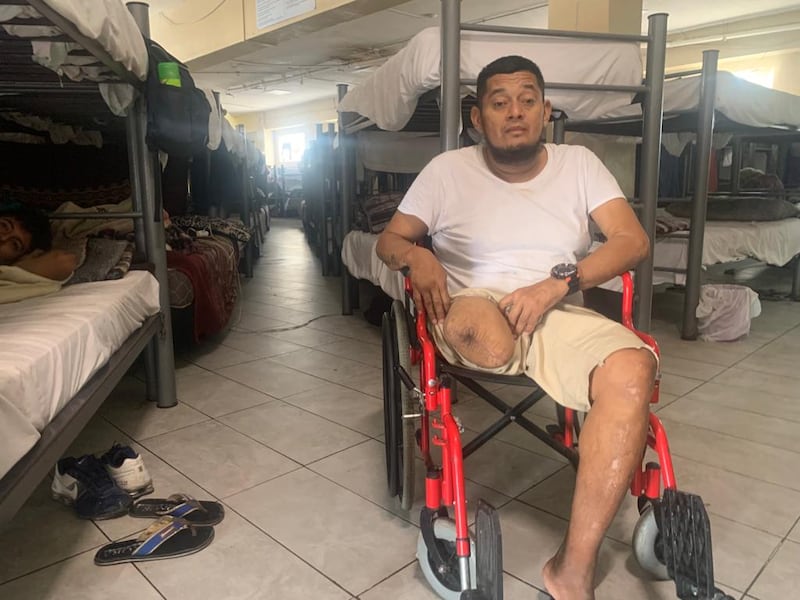
The risks are many, real and obvious. Sometimes they fall asleep and roll off the train. Sometimes they are attacked by thieves who steal and kill without a second thought, snuff out a life in circumstances few notice or seem to care about. And when eventually they get to the border, to cross the Rio Grande at night, more dangers lurk.
Rivera was on The Beast last November. He’s 42 years old now and is from Honduras. His dream, like many others, was to get to the US and build a new life for himself. But something happened. He fell off the train and as it continued along the track, the wheels sliced off his right leg above his knee and mangled some of the toes of his left foot.
Rivera tells me all this in a very matter-of-fact, unemotional way, a blank expression on his face throughout. I ask may I take his picture – yes, of course, he says, and immediately rolls up his left trouser leg to show his severed limb. The skin of his thigh has been folded down and under itself to create an almost pillow-like appearance.
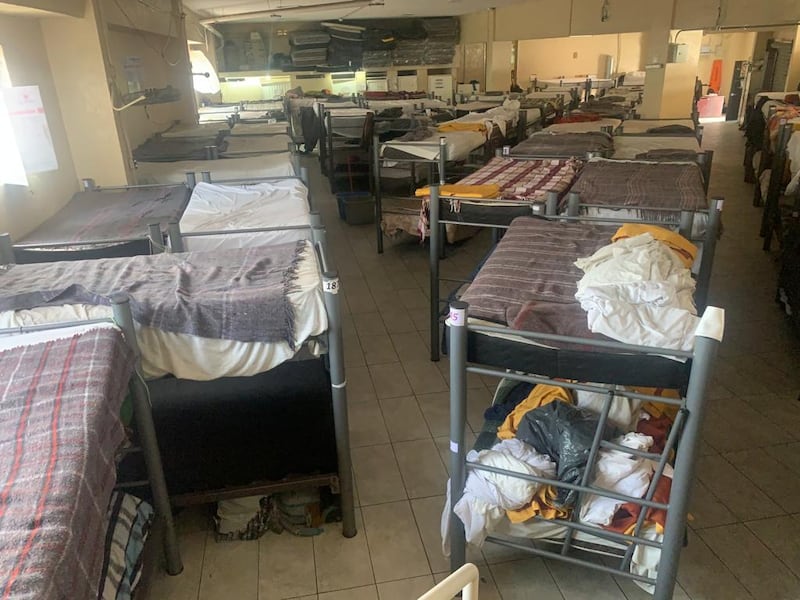
I try to have something approaching a normal conversation with him (I think he said he had a family of one back in Honduras) but I feel overwhelmingly inadequate because there is nothing I can say or do that is going to fix Rivera’s life. He has lost a leg and is now wheelchair bound. Whatever life he imagined for himself in the US is no longer available, and whatever life he left behind in Honduras, however inadequate it was to prompt him to leave in the first place, that life too is gone.
I met Rivera at Casa Indi, one of the most difficult, draining places I have ever been to in more than 40 years reporting and yet if there are saints, this is where they are. Casa Indi is a one-night-only stopover and provider of food to migrants and to this city’s destitute, and is part of the parish of Santa Maria Goretti.
It was founded in 2014 by Father Felipe de Jesús Sánchez Gallegos to help the city’s poor but, three years later, witnessed many migrants arrive from Central America, and they have not stopped coming since. The north city centre location is a bit odd – a triangular wedge created by two busy and fast moving inner city highways crossing each other, which is itself then sliced in half by a short road linking the highways. The short road isn’t used much and so has become almost a plaza between the two parts of Casa Indi’s operations.
On one side, donations – food, clothes, bedding, anything that might help – are received. There is fairly regular toing and froing as modest donations, including non-perishable food, are delivered. One of the vans has a United Nations High Commissioner for Refugees logo on the side. There is also an ambulance bay. There is also the communal dining hall with, at a quick glance, seating for about 100. There are four sittings a day.
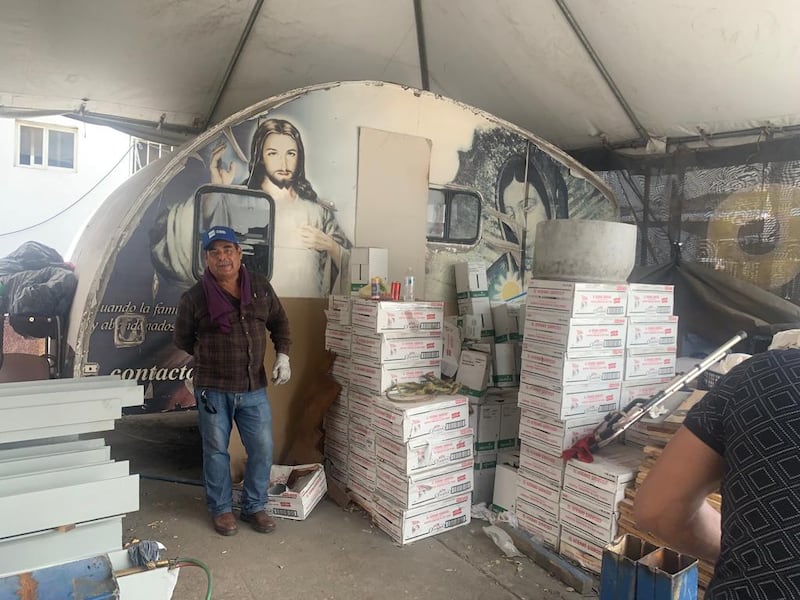
On the other side of the short dividing road is what looks like a repurposed post-industrial building that is in fact the parish of Santa Maria Goretti. The area used to be heavily industrialised and many of the roads have embedded in them what are now disused train tracks. But the main railway line is only a few metres away and slow-moving freight trains pass every few minutes, heralded by that mournful hooter sound used on north American railways. The Maria Goretti building includes a 100-bed albergue for migrants.
It is run at the moment by González, who is 39 years old. He is from Cuba and tells me that he left the Caribbean island for both political and religious reasons. The politics are simply bad, he says, and while he may practice his religion there now, he doesn’t trust the government that it will always be so. He wants a future elsewhere. For now, however, he runs the bunk bed albergue for migrants. It’s a low-ceilinged cavernous place, crammed tight with bunks, some of them with makeshift side drapes, where the occupants have attempted to secure a modicum of privacy.
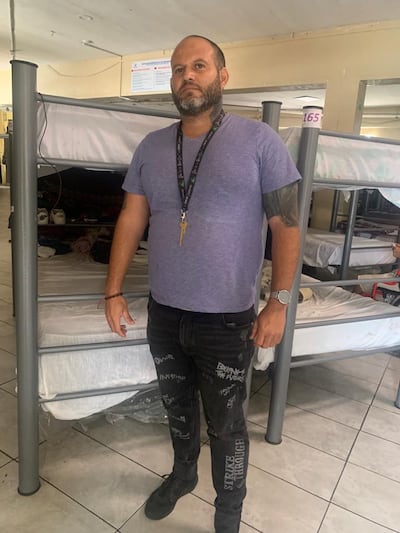
González shows me the log book: last night, there were 73 men, three women, seven older children and four babies. Their nationalities were recorded as being from Venezuela, Honduras, Salvador and Guatemala. The children’s ages included a seven-year-old, a six-year-old, two five-year-olds and a four-year-old. The seven-year-old might have been Elbe, a cheeky fellow hanging around the bunk beds, who was from Honduras and with his father.
González has photos on his phone of many of those who pass through. They are almost police station ID-type images with the subject holding up a large card with information about themselves on it. I almost can’t bear to look at them; they betray no hint of what is to come next – the journey to the frontier; the furtive crossing, vulnerable to attack and worse; the likelihood of arrest and return or, the incredibly hard life, illegal and permanently under all official radars, if lucky.
Guests pay nothing but must sign a form accepting they can only stay one night. For that, they get a safe bed (a luxury for many, surely?) and a meal, and can take any of the donated clothes that are available from plastic bags behind González’s desk.
On the short road, there is a half–wrecked caravan-cum-trailer with, bizarrely, an image of a smiling and waving Pope Francis mounted on the side in such a way that his face straddles the bars of a window, making it look as though he is in jail. I feel certain that wasn’t the intention. Underneath the front of the trailer, where a tractor would connect to it for towing, a few young men appear to be bartering rather furtively.
Over by the albergue and shaded by an awning, young and some not-so-young men, are lounging about, waiting for a bed and a meal, I suspect. They appear lifeless and drained, possibly worn out from their journey so far. Does their hope of a better life outbalance any anxiety they have about the illegal frontier crossing they are about to attempt?
One of the senior people running Casa Indi is an accountant, José Jaime Salinas Flores – the first person I approached, completely unannounced and without warning, by wandering into his office on the donations side. It turns out he is in charge of all that and, despite initial caution about me, was extremely helpful by showing me around and introducing me to González. His office is gloriously cluttered: a plastic Santa vies for attention with rubber stamps, stacks of paper, a teddy, an Eiffel Tower, packets of biscuits and jars of sweets, but José's focus stays on fundraising – $200,000 is needed every year.
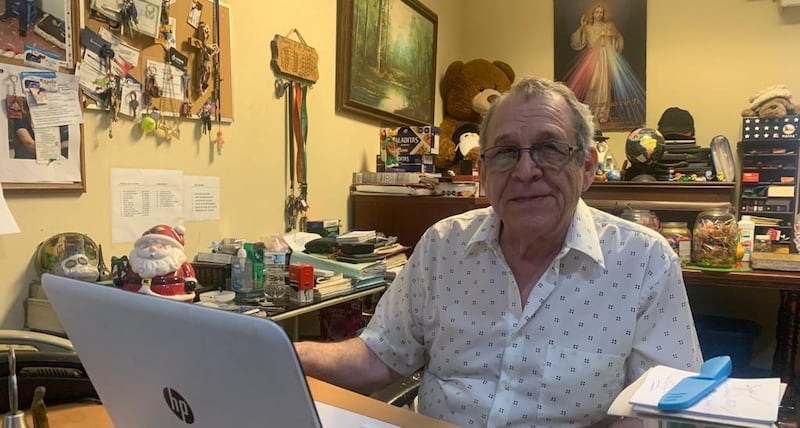
I tell him at the end that I don’t know how he can come here every day, that it is such an upsetting place. His non-spoken answer suggests, to me at any rate, that this is how it is and we must do what we can.
Just before I leave, I sat for a while on a stump of concrete on the short street, surveying the scene. A young woman, she could not have been more than 24, with a boy, who looked about five years old, or maybe seven, walked past me. He was wearing an over-sized football strip. Did I have any trousers for him, she asks? I hadn’t noticed that the shirt was the only stitch of clothing on him – no pants, no trousers, no shoes.
There are saints at work here for sure. I just hope there are no monsters too.
If you would like to contact fundraiser José Flores, his email is jjsalinas224@gmail.com
Peter Murtagh is travelling by motorbike from Tierra del Fuego, at the tip of South America, to Alaska, at the top of North America, and writing here regularly. You can also read his blog and follow him on Twitter, Facebook and Instagram





















